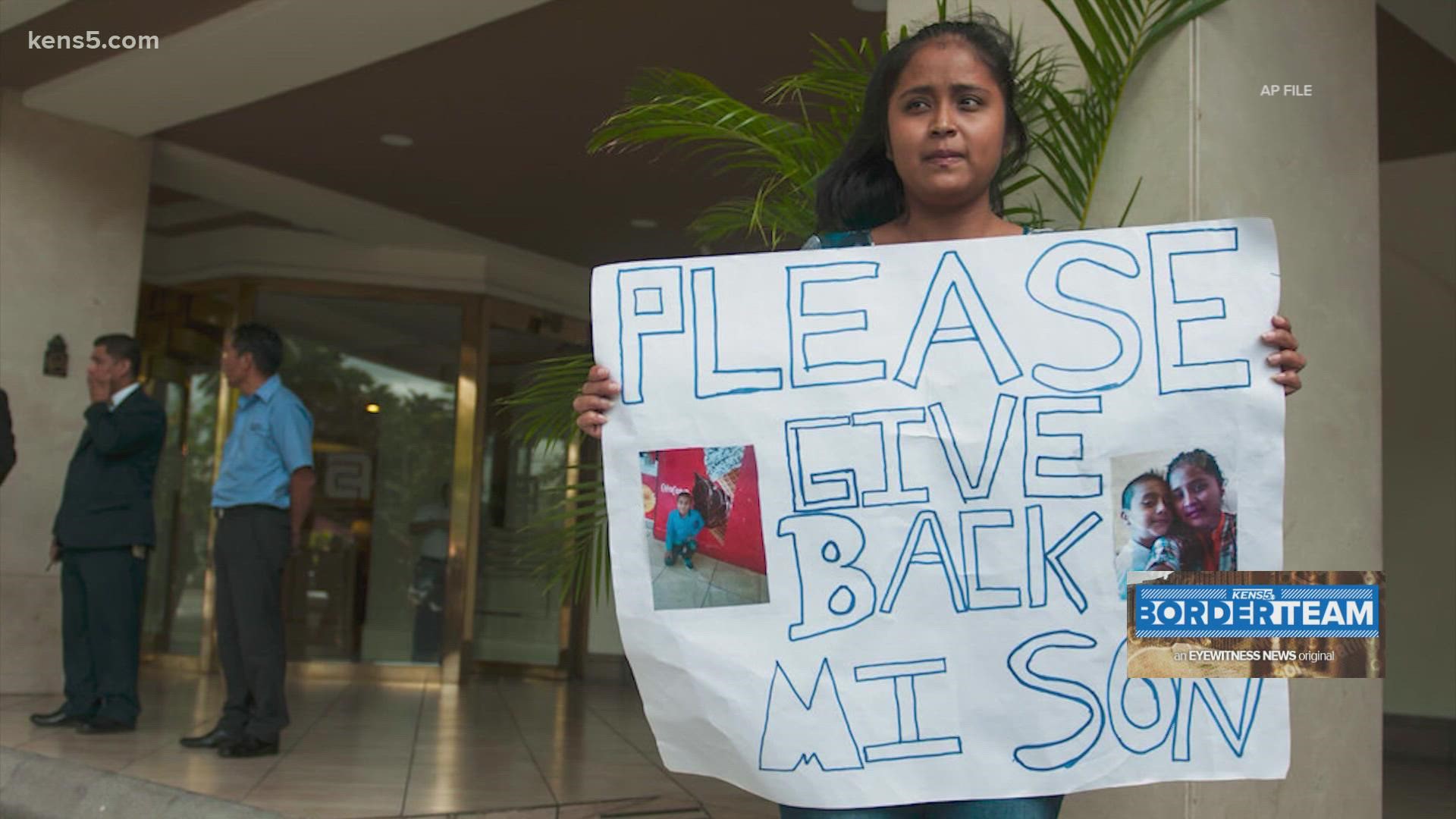LAREDO, Texas — Separated from her 8-year-old at the Texas-Mexico border, the only way Elsa Ortiz figured she could get her boy back to Guatemala is to make a poster and stand outside the U.S. Embassy in Guatemala City.
“I went to a lot of interviews so I could get him back and hope (to make) viral what was happening," Ortiz told KENS 5.
Ortiz took her son, Anthony, to the southern border in 2018, crossing the Rio Grande.
At the time, the Trump administration had a child separation policy in place, aimed, as administration officials said, at deterring migration.
Multiple sources have said the administration had no process in place for reunited people like Ortiz with their kids.
Ortiz’s plan of public protest worked. Nearly three months and a couple of high-profile attorneys later, mother and son were reunited.
“He suffered a lot of the very beginning,” Ortiz described. “He had nightmares, about three months with nightmares. He would hardly eat, he would hardly play.”
Laredo-based attorney Ricardo de Anda was on the team that reunited Ortiz with her son.
“It's such a horrific trauma,” de Anda told KENS 5. “The very least the government can do is allow them back into the country, allow them to live in the United States of America after the harm done.”
In February 2021, President Joe Biden signed an executive order establishing an Interagency Task Force on the Reunification of Families.
The goal of the task force, according to the Department of Homeland Security press release is to “to identify parents and children separated by the prior administration” and to “implement comprehensive strategies that will bring families back together and ensure the families are provided support.”
In an emailed statement, DHS spokesperson told KENS 5, in part, “Separated families who qualify, including children who were removed or reunified with parents in their home country, can, on a case-by-case basis, receive humanitarian parole to enter the United States for purposes of reunification and access to behavioral health services. To the extent permissible under the law, the Task Force is working to identify opportunities for families to pursue lawful immigration status that best ensures their safety and stability.”
According to the Task Force progress report published in August, 65 parole requests have so far been filed for separated parents and additional family members have been filed with the U.S. Citizenship and Immigration Services.
In total, according to the report, the task force has identified 3,914 children who fall within the scope of the president’s executive order and who were separated between July 1, 2017 and Jan 20, 2021, based on the Zero-Tolerance Policy.
The task force's report said the Department of Health and Human Services provided access to behavioral health screenings and other treatments for health conditions caused by family separation.
“The task force is exploring a variety of options to provide additional services and support to reunified families in the United States, including appropriated funds,” the report stated.
“Giving these families some measure of relief is a cleansing of our national conscience,” de Anda added.
The lawyer said the government has been notified that Ortiz and Anthony should be given humanitarian visas and allowed back into the U.S.
“We're guilty of as a country,” de Anda said. “Now we need to take the next step, and that's to make amends, and that's what this is all about and it goes much, much deeper than Elsa and Anthony, although they deserve what we're trying to give them. It goes much deeper than that. It's about us as Americans, as citizens of this country.”
Anthony is now 11. Ortiz told KENS 5 he was doing much better.
She told us she’s asked him to forgive her for bringing him to the border and all that happened afterward.
“He gave me a hug and told me not to worry, because he knew I had done it with good intentions and my dream is for him to have a good future,” Ortiz said.
Ortiz told KENS 5 she’d like an opportunity to come back.
“If this does happen, I think my son’s dream would come true and I would also have a different opportunity,” she said. “I would have a better job. I would have a way to better support my family because my son and my family are my priority.”
In the meantime, Ortiz sells traditional clothing and ships it to the United States.
The American Civil Liberties Union sued the government over child separation and helped reunify many families. The ACLU told KENS 5 it estimated more than 1,000 separated families could be eligible for humanitarian visas and return to the United States.
ACLU said the 40 or so families reunited so far were test cases, “designed to create a system and were represented by NGOs (non-profit groups) who could handle the logistics abroad without the need for a system.”
According to the ACLU, procedures and criteria for the system are being finalized and could be in place by early fall.
There is an important difference between children separated under Trump and unaccompanied children in federal custody now. The previous administration forcibly took kids away from parents, saying it was a way to deter migration.
Now, advocates say many parents choose to send their children across the border alone, in order to prevent likely expulsion if they cross together. If kids under 18 years of age come by themselves, the U.S. no longer removes them from the country.

